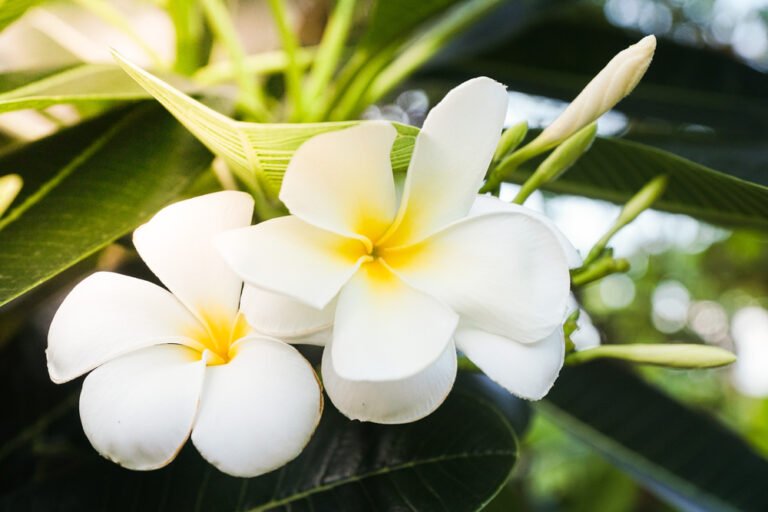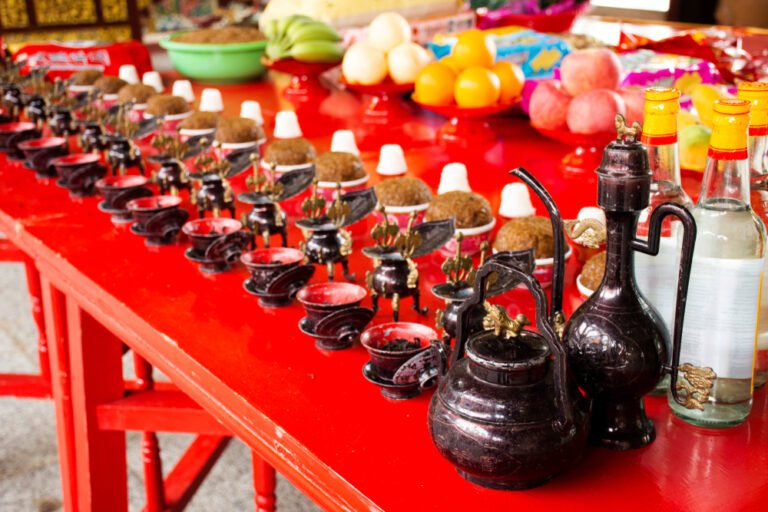Exploring the Symbols and Rituals of Chinese Death Customs

Death, a delicate and profound aspect of life, is shrouded in intricate rituals and symbols, particularly within Chinese culture. In this exploration, we’ll look deeply into the significance of death rituals and the vast array of influences that shape them.
Understanding the Chinese symbols for death not only offers a glimpse into the country’s incredible history but also reveals the collective psyche surrounding life’s final passage.
History and background
The Chinese ethos regarding death stretches back millennia, with ancient beliefs about the afterlife shaping a unique approach to mortality. Lavish burials with intricate funeral objects were commonplace, stemming from the notion that the afterlife was a continuation of the earthly journey.
Inhumation, placing the deceased in the ground, was the principal funeral custom, yet other methods like sky burial and the enigmatic cliff burials served as alternative practices, each with their own deep symbolism and purpose.
Related Reading: How to Say Sorry in Chinese: Best Ways to Apologize Correctly
Chinese symbols for death

In Chinese culture, symbols serve as the language of the soul, conveying profound meanings and beliefs about the cycle of life and death. Let’s take a deeper look into the specific traditional Chinese symbols for death, each carrying its own story and place within the cultural consciousness.
The character for “death” (si)
The Chinese character for “death” (死, si) is a potent symbol within the Chinese lexicon, often avoided in everyday conversation due to its inauspicious nature. Calligraphers approach this character with reverence, aware of its gravity and the cultural complexities it embodies. It’s more than a mere ideogram. It encapsulates a philosophy, a universal truth acknowledged with respect and solemnity.
The number four
The number four (四, si) is notoriously avoided in Chinese culture due to its phonetic resemblance to the word for death (死). This superstition permeates daily life, with many buildings lacking a fourth floor or labels skipping from three to five to sidestep the negative association.
The number four’s status as a death symbol influences consumer behavior, architecture, and even social interactions, illustrating the power of linguistic connections in superstitions.
Melons
Melons, particularly bitter melons, hold a place in Chinese symbolism related to death. They’re often associated with the bitter nature of mortality and the transient sweetness of life. In some regions, melons are placed at ancestral altars during festivals. These offerings symbolize the wish for peace for the deceased in the afterlife.
White frangipani flowers

A very common symbol often seen in Chinese funerals is white frangipani flowers. Their pure white blossoms are believed to guide the spirit of the deceased towards heaven. In contrast to Western cultures, where flowers might be chosen for their beauty or fragrance, the white frangipani is selected for its symbolic guidance and is a staple in funeral arrangements and ceremonies.
Crows
In many cultures, crows are considered omens, and this is no different in Chinese tradition. The crow’s stark black plumage and its ominous calls have earned it a place as a harbinger of death. The appearance of crows is often interpreted as a sign of bad luck or an impending demise, reflecting the enduring human tendency to find meaning in the patterns of nature.
Date trees
Date trees are a symbol of immortality and have a dual representation. While they’re revered for their life-giving fruit, they’re also seen in proximity to cemeteries and are thought to help guide and protect the spirits of the ancestors. The tree’s longevity and its role in sustaining life make it a natural emblem within the rituals of death.
Cicadas
The cicada is a powerful symbol of rebirth and immortality. Known for shedding their shells, cicadas are seen as embodiments of transformation and transcendence, symbolizing the soul’s liberation from the body upon death. Their emergence from the ground and subsequent flight is metaphorically aligned with the journey of the spirit leaving the earthly realm.
These symbols, woven into the fabric of Chinese culture, illustrate the depth and complexity of the society’s relationship with death. Each symbol brings with it a narrative that has been passed down through generations, a testament to the rich Chinese beliefs and traditions surrounding the end of life.
Related Reading: Tips for a First-Time Visit to China
Feng shui and burial sites
In Chinese culture, the ancient art of Feng Shui, which translates to “wind and water,” is a practice deeply intertwined with the selection of burial sites, a practice reflecting the enduring Chinese customs for death. This philosophy, rooted in Taoist ideologies, posits that the energy flow—or Qi—of a space can influence the fortune and well-being of the living and the peaceful repose of the deceased.

The principles of Feng Shui are always applied to create harmony between a person and their environment. When it comes to the final resting places of the departed, the alignment and orientation of the grave are carefully considered to ensure a favorable balance with nature.
The most Feng Shui kind of burial site is usually one that faces south, often with a higher ground behind it. This is usually referred to as the “tortoise” position in Feng Shui, which provides support and protection. A view of water, representing wealth and continuity, is also desirable, along with gentle slopes that embody the nurturing embrace of the “dragon” and “tiger” — energies that are believed to offer protection and good fortune.
This attention to detail in the selection of burial sites isn’t only reserved for the common populace but is even more pronounced in the grandeur of imperial tombs and mausoleums. The Chinese funerals of emperors and high-ranking officials were a statement of power and belief, with their tombs constructed to ensure a favorable journey into the afterlife and continued prosperity for their lineage.
Related Reading: The Definitive Guide to Chinese Proverbs, Sayings, and Quotes
The Ming Tombs, an aggregation of mausoleums built by the emperors of the Ming dynasty, are a prime example where Feng Shui principles were rigorously applied. The site, chosen for its auspicious location surrounded by mountains, was believed to channel positive Qi and shelter the emperors in death as in life.

The notion of energy flow and balance extends to the construction of the tombs themselves. The layout, materials used, and even the vegetation planted around the tombs are chosen for their symbolic significance and their ability to attract positive Qi. The harmony of these elements with the natural landscape ensures a tranquil environment, conducive to the spirit’s journey according to the rituals of death.
In contemporary times, while the grandiose scale of imperial burials may no longer be the norm, the influence of Feng Shui remains pervasive. Many still seek the advice of Feng Shui masters when choosing burial sites, reflecting a tradition that has withstood the test of time.
The practice not only honors the dead but also serves as a bridge between the past and present, a manifestation of the ongoing dialogue between the living and those who have passed, all within the embrace of the natural world.
Related Reading: Is Chinese Hard to Learn?
Funeral customs
Chinese funerals are deeply rooted in tradition and are considered a vital expression of filial piety and respect. They reflect the weighty Chinese customs for death and the cultural imperative to honor the departed with dignity and reverence.
The wake is a significant component of Chinese funerals, marked by its solemn and careful preparation. The body of the deceased is cleansed with utmost respect, which is believed to purify the spirit for its journey to the afterlife. This act isn’t just for the benefit of the deceased but serves as a final, dutiful gesture by the family, reflecting the deep-rooted value of respecting one’s ancestors.
Clothing for the deceased is chosen with intention, often traditional and in color schemes that adhere to the symbolism ingrained in Chinese culture. White is the traditional color of mourning in China, symbolizing purity and rebirth, and is often chosen for the deceased’s attire.
In contrast, family members may wear black, which signifies the loss and lamentation of the bereaved. Red, a color typically associated with luck and joy in Chinese culture, is conspicuously absent from funerals, as it’s considered highly inappropriate and disrespectful in the context of death.
Offerings are an essential aspect of the wake, ranging from the deceased’s favorite foods to paper money and miniature paper replicas of houses, cars, and other worldly possessions. These items are burned as offerings to ensure that the deceased has all they need in the afterlife, a practice deeply connected to the rituals of death.
Related Reading: A Tourist’s Guide to Chinese Money
Rituals performed during the wake and funeral are numerous and vary according to regional and familial traditions. Chanting, prayers, and vigil-keeping are common, creating an atmosphere of solemnity and remembrance. The lighting of incense is an enduring ritual, its fragrant smoke ascending as if to carry the prayers of the family to the heavens.
Superstitions also play a critical role throughout Chinese funerals. Mirrors may be covered to prevent the deceased’s spirit from getting trapped, and certain taboos are observed, such as avoiding crying near the coffin to prevent burdening the spirit. The direction of the deceased’s spirit is also taken into account, with the coffin often positioned to face a certain way before the funeral procession begins.
The funeral procession itself is an elaborate affair. At the front of the procession, there might be a band playing somber music. This will be followed by family members and, finally, the hearse. The length of the procession and its scale might be seen as a reflection of the deceased person’s status and respect.
The burial itself signifies the end of the ceremonies. The deceased is laid to rest based on any auspicious signs and the tenets of Feng Shui. Earth is gently placed over the coffin, signifying a return to the elements and the cycle of life and death continuing.
In these ways, Chinese funerals serve as a final, loving tribute to the deceased, encapsulating a complex interplay of cultural customs, rituals of death, and the universal human desire to honor and remember those we’ve lost.
Related Reading: How to Say “I Miss You” In Chinese
Mourning periods
The mourning period within Chinese culture is emblematic of the profound reverence for family ties and ancestral lineage — a cornerstone of societal values. This practice of mourning is a manifestation of filial piety, a Confucian virtue of respect for one’s parents, elders, and ancestors. It underscores the Chinese customs for death, which are among the most deeply held traditions.

Historically, the mourning period would extend up to three years, a length of time indicative of the deep sense of duty and honor towards the deceased. This prolonged period allowed the bereaved to express their grief fully, ensuring that the departed were given due respect and their absence was sincerely acknowledged.
During this time, those in mourning would often wear somber clothing, commonly in shades of white, abstain from festivities, and may even refrain from certain daily pleasures and activities to demonstrate their sorrow.
These extended mourning periods were also a time for the family to engage in various rites and offerings. These would often take place at home altars or gravesites, where family members would pay homage to the deceased with incense, food, and prayer. Such practices were believed to assist the deceased in their journey to the afterlife and to maintain their spirit’s presence within the household.
As Chinese society has embraced more modern approaches, there’s been a change not just in the duration but in the expression of mourning. The contemporary approach is more commonly a 100-day mourning period, which, while significantly shorter than the traditional three years, still embodies the same spirit of remembrance and honor for the deceased.
The number 100 has its own significance in Chinese culture, often associated with wholeness and completion, making it a fitting period for mourning practices.
Related Reading: Numbers in Chinese: How to Count And More
The reduction in the length of mourning periods reflects broader societal changes, including economic development and the pressures of modern life, which may make longer periods of mourning impractical. However, this evolution does not diminish the cultural importance of mourning. Instead, it shows an adaptation of traditional practices, maintaining their essence while fitting into the new rhythms of contemporary life.

Despite these changes, the enduring customs for death remain a testament to the Chinese people’s unwavering commitment to family and tradition. Whether through elaborate ancestral rituals or the quiet reflection of the 100-day mourning period, the practices continue to be a poignant reflection of the Chinese ethos, bridging the past with the present and honoring the eternal cycle of life and death.
Remembering the dead
In Chinese culture, remembering the deceased isn’t limited to the immediate aftermath of passing; it’s an enduring commitment that spans the entire year. This continuous homage is deeply embedded in the Chinese customs for death and the broader cultural fabric. The rituals of death are not seen as a conclusion but as a perpetual cycle of reverence and memory.
One of the most poignant expressions of this ongoing remembrance is the Qingming Festival, also known as Tomb-Sweeping Day. Occurring in early April, this festival is one of the most significant Chinese customs for death, dedicated to the act of ancestor worship.
During Qingming, families visit the gravesites of their ancestors to engage in a ritual cleaning — sweeping away the debris and weeds that have gathered, which is an act of care and respect. This tradition is steeped in the philosophy that maintaining the physical grave is akin to tending to the ancestor’s spirit.

Offerings are a central element of the Qingming Festival, with families bringing food, tea, wine, joss sticks, and paper money to the graves. These offerings are not mere formalities; they’re symbolic gestures of sustenance and prosperity for the ancestors in the afterlife, ensuring their well-being and seeking their blessings in return.
Related Reading: Qingming Festival – 清明节 Qīngmíng jié
The festival isn’t solely about upkeep and offerings. It’s also a time for families to gather, share stories of their ancestors, and reflect on the legacy that has been passed down to them. It’s a day that reinforces family bonds and transmits the stories and values of previous generations to the young, ensuring that the memories of the ancestors are kept alive.
Beyond Qingming, other days throughout the year are set aside for honoring the deceased, such as the Hungry Ghost Festival, held at a time when the veil between the living and the dead is considered thin, allowing for closer communion with the spirits of ancestors.
In day-to-day life, Chinese families often maintain altars or have dedicated spaces in their homes so they can honor their ancestors. Photographs, incense, and fresh offerings are common, serving as a daily reminder of the family’s lineage and history.
The rituals surrounding the remembrance of the dead serve as a vivid acknowledgment of the cyclical nature of life, a belief that those who have passed continue to influence and guide the living. They’re not forgotten but are instead integrated into the rhythm of daily life, their presence felt in the collective memory and in the continued adherence to the rituals that have honored them for centuries.
Related Reading: So Many Ways to Say “Goodbye in Chinese”
Coffins and cryptic symbolism
When it comes to Chinese traditions, coffins aren’t just resting places for the deceased but are imbued with deep cultural significance, reflecting the Chinese customs for death and the reverence with which the transition from life is treated. The construction and choice of coffins are considered an essential part of the funerary rites, embodying both respect for the departed and the broader philosophical views on mortality.
Liuzhou, a city in Guangxi Zhuang Autonomous Region, is renowned for its high-quality coffins, which are crafted with such care and skill that they have come to symbolize more than just final resting places.
The Liuzhou coffins are particularly prized for their durability and the quality of wood used, often taken from auspicious trees that are believed to carry properties of luck and longevity. Selecting a Liuzhou coffin can be seen as a final act of love and honor, bestowing upon the departed the blessings of a favorable afterlife and affirming their valued place within the family.

The cryptic symbolism associated with coffins extends to the tradition of presenting coffin-themed gifts. While this may seem morbid from an outside perspective, in some Chinese communities, these gifts are given as a potent symbol of good fortune.
For example, a small, exquisitely crafted model of a coffin might be given to an elder, paradoxically signifying a wish for a long life and health. The underlying message is one of protective magic — by symbolically “burying” the notion of death, the elder is hoped to be shielded from its reach.
These practices are steeped in the rituals of death that permeate Chinese culture, where death isn’t an end but a transformation — an integral part of the cycle of existence. The coffin serves not only as the final resting place for the physical body but also as a vessel carrying profound cultural and spiritual significance. It’s an object that encapsulates the journey of the soul and the enduring connection between the living and their ancestors.
In these ways, the symbolism of coffins in Chinese culture is rich and complex, interweaving notions of death with those of protection, honor, and the cyclical nature of life. They stand as a testament to the nuanced understanding that death is a natural and respected passage, one that’s to be prepared for with reverence and thoughtfulness.
Related Reading: Do You Need to Learn Chinese to Visit China?
The end as a new beginning
Our journey through the Chinese customs and symbols of death reveals a culture that embraces the end of life with as much significance as its beginning. As we consider these key themes, we invite you to deepen your understanding of this rich cultural tapestry.
Engage with the Mandarin language and its profound connections to these ancient customs through our FREE Mandarin Fluency Scorecard. Assess your skills, identify your personal barriers to fluency, and take the next steps on your linguistic journey with a customized guide designed to elevate your proficiency in mere moments.
Embrace the opportunity — it’s free and takes under 60 seconds. Embark on this path, and let the wisdom of ages guide you to fluency.<Take the Scorecard!>








